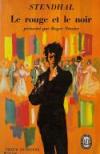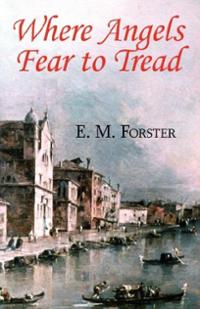Author Photo And Bio
 1. Great Expectations by Charles Dickens (1860–61). Dickens gives a twist to an ancient storyline —of the child of royal birth raised in humble surroundings. Looking back on his life, Pip describes his poor youth near marshes in rural England —his chance encounter with a murderous convict, his experiences with the strange Miss Havisham, who always wears a wedding dress, and his love for her beautiful adopted daughter Estella. As he approaches adulthood, Pip learns that he has a secret benefactor who arranges opportunities for him in London, wherein lies the tale, and the twist.
1. Great Expectations by Charles Dickens (1860–61). Dickens gives a twist to an ancient storyline —of the child of royal birth raised in humble surroundings. Looking back on his life, Pip describes his poor youth near marshes in rural England —his chance encounter with a murderous convict, his experiences with the strange Miss Havisham, who always wears a wedding dress, and his love for her beautiful adopted daughter Estella. As he approaches adulthood, Pip learns that he has a secret benefactor who arranges opportunities for him in London, wherein lies the tale, and the twist.
 2. The Hamlet by William Faulkner (1940). The first novel in Faulkner’s Snopes trilogy —which was followed by The Town (1957) and The Mansion (1959)—The Hamlet is a series of linked stories centering on the family’s rise after the Civil War. Clever, ambitious, coarse, and unscrupulous, they embody Faulkner’s ambivalence for the New South, which he saw as a land of greater opportunity and diminished culture. Mixing humor, tragedy, violence, and pathos, The Hamlet is considered Faulkner’s last great novel.
2. The Hamlet by William Faulkner (1940). The first novel in Faulkner’s Snopes trilogy —which was followed by The Town (1957) and The Mansion (1959)—The Hamlet is a series of linked stories centering on the family’s rise after the Civil War. Clever, ambitious, coarse, and unscrupulous, they embody Faulkner’s ambivalence for the New South, which he saw as a land of greater opportunity and diminished culture. Mixing humor, tragedy, violence, and pathos, The Hamlet is considered Faulkner’s last great novel.
 3. Joseph Andrews by Henry Fielding (1742). The comic trouble starts when a naive footman rejects the advances of his employer, Lady Booby, and her servant, Slipslop. Cast out, he and the saintly Parson Adams hit England’s rough roads in search of Joseph’s beloved, Fanny Goodwill. Like Don Quixote and Sancho Panza, the world rewards their goodness with violent complication. After Joseph finds Fanny —who might be his sister —Fielding amps up the sexually charged farce in this novel of friendship and virtue that satirizes Samuel Richardson’s novel Pamela.
3. Joseph Andrews by Henry Fielding (1742). The comic trouble starts when a naive footman rejects the advances of his employer, Lady Booby, and her servant, Slipslop. Cast out, he and the saintly Parson Adams hit England’s rough roads in search of Joseph’s beloved, Fanny Goodwill. Like Don Quixote and Sancho Panza, the world rewards their goodness with violent complication. After Joseph finds Fanny —who might be his sister —Fielding amps up the sexually charged farce in this novel of friendship and virtue that satirizes Samuel Richardson’s novel Pamela.
 4. The Red and the Black by Stendhal (1830). Stendhal inaugurated French realism with his revolutionary colloquial style and the famous pronouncement, “A novel is a mirror carried along a highway.” Julien Sorel, the tragic antihero, rises from peasant roots through high society. In his character, the “red” of soldiering and a bygone age of heroism vies with the “black” world of the priesthood, careerism, and hypocrisy.
4. The Red and the Black by Stendhal (1830). Stendhal inaugurated French realism with his revolutionary colloquial style and the famous pronouncement, “A novel is a mirror carried along a highway.” Julien Sorel, the tragic antihero, rises from peasant roots through high society. In his character, the “red” of soldiering and a bygone age of heroism vies with the “black” world of the priesthood, careerism, and hypocrisy.
 5. Stories of Eudora Welty (1909–2001). (See appreciation below.)
5. Stories of Eudora Welty (1909–2001). (See appreciation below.)
 6. On the Eve by Ivan Turgenev (1860). Turgenev’s ur-themes of authenticity and humanism are highlighted in this tragic love story in which Elena Stahov, the novel’s passionate and do-gooding heroine, falls in love not with the suitor her father has picked for her, but with Dimitry Insarov, a Bulgarian revolutionary who blazes like a flame against the feckless upper-middle-class Russians that make up Elena’s other suitors.
6. On the Eve by Ivan Turgenev (1860). Turgenev’s ur-themes of authenticity and humanism are highlighted in this tragic love story in which Elena Stahov, the novel’s passionate and do-gooding heroine, falls in love not with the suitor her father has picked for her, but with Dimitry Insarov, a Bulgarian revolutionary who blazes like a flame against the feckless upper-middle-class Russians that make up Elena’s other suitors.
 7. Where Angels Fear to Tread by E. M. Forster (1905). “For fools rush in where angels fear to tread,” wrote Alexander Pope. That quote informs this biting tale that begins when a rich young widow, Lilia Herriton, travels to Italy. There she meets and marries a penniless Italian and dies in childbirth. Her relatives rush to retrieve the infant and give him a “proper” English upbringing. But his father objects in this first novel that signals Forster’s lifelong interest in cultural collisions and British hubris.
7. Where Angels Fear to Tread by E. M. Forster (1905). “For fools rush in where angels fear to tread,” wrote Alexander Pope. That quote informs this biting tale that begins when a rich young widow, Lilia Herriton, travels to Italy. There she meets and marries a penniless Italian and dies in childbirth. Her relatives rush to retrieve the infant and give him a “proper” English upbringing. But his father objects in this first novel that signals Forster’s lifelong interest in cultural collisions and British hubris.
 8. Cold Mountain by Charles Frazier (1997). Frazier won the National Book Award for Fiction for his first novel, set in North Carolina during the Civil War. In rich language that evokes his nineteenth-century landscape, Frazier tells two interconnected stories exploring the themes of love and war and the natural world. The first concerns the Con federate soldier Inman who, like Odysseus, endures a series of deadly obstacles as he crosses the state to return to his home and the woman he loves. The second story centers on that woman, Ada, a pampered Southern belle who, with the help of the mountain woman Ruby, learns to fend for herself in a war ravaged landscape.
8. Cold Mountain by Charles Frazier (1997). Frazier won the National Book Award for Fiction for his first novel, set in North Carolina during the Civil War. In rich language that evokes his nineteenth-century landscape, Frazier tells two interconnected stories exploring the themes of love and war and the natural world. The first concerns the Con federate soldier Inman who, like Odysseus, endures a series of deadly obstacles as he crosses the state to return to his home and the woman he loves. The second story centers on that woman, Ada, a pampered Southern belle who, with the help of the mountain woman Ruby, learns to fend for herself in a war ravaged landscape.
 9. Tender Is the Night by F. Scott Fitzgerald (1934). The heartbreaking, semiautobiographical story of two expatriate Americans living in France during the 1920s: a gifted young psychiatrist, Dick Diver, and the wealthy, troubled patient who becomes his wife. In this tragic tale of romance and character, her lush lifestyle soon begins to destroy Diver, as alcohol, infidelities, and mental illness claim his hopes. Of the book, Fitzgerald wrote, “Gatsby was a tour de force, but this is a confession of faith.”
9. Tender Is the Night by F. Scott Fitzgerald (1934). The heartbreaking, semiautobiographical story of two expatriate Americans living in France during the 1920s: a gifted young psychiatrist, Dick Diver, and the wealthy, troubled patient who becomes his wife. In this tragic tale of romance and character, her lush lifestyle soon begins to destroy Diver, as alcohol, infidelities, and mental illness claim his hopes. Of the book, Fitzgerald wrote, “Gatsby was a tour de force, but this is a confession of faith.”
10. The Professor’s House by Willa Cather (1925). The professor’s house was “almost as ugly as it is possible for a house to be.” Now it has been dismantled. Yet the house, a symbol of the past, keeps beckoning Godfrey St. Peter, a professor in his mid-fifties whose outward success at work and home mask a passionless heart. “Theoretically he knew that life is possible, may be even pleasant, without joy. . . . But it had never occurred to him that he might have to live like that.”
Appreciation of the Stories of Eudora Welty by Louis D. Rubin Jr.
At first glance, the people Eudora Welty usually writes about seem unremarkable, as are the mostly Mississippi towns, cities, and countryside they live in.
To read her stories, however, such as “Why I Live at the P.O.,” “Petrified Man,” “Powerhouse,” “Moon Lake,” and “Kin,” is to learn otherwise. Through them you enter the realm of the extraordinary, as revealed in the commonplace. Each of Welty’s seemingly mundane people exhibits the depth, complexity, private surmise, and ultimate riddle of human identity. “Every-body to their own visioning,” as one of her characters remarks.
There is plenty of high comedy. Few authors can match her eye for the incongruous, the hilarious response, the bemused quality of the way her people go about their lives. There is also pathos, veering sometimes into tragedy, and beyond that, awareness of what is unknowable and inscrutable.
Her most stunning fiction is the group of interconnected stories published in 1949 as The Golden Apples. These center on the citizenry of Morgana, Mississippi, over the course of some four decades. In “June Recital” German-born Miss Lottie Elisabeth Eckhart teaches piano to the young. These include Cassie Morrison, who carries on her teacher’s mission, and Virgie Rainey, most talented of all, who in spite of herself absorbs “the Beethoven, as with the dragon’s blood.” In the closing story, “The Wanderers,” Virgie sits under a tree not far from Miss Eckhart’s grave and gazes into the falling rain, hearing “the magical percussion” drumming into her ears: “That was the gift she had touched with her fingers that had drifted and left her.”
Welty’s richly allusive style, alive to nuance, is not really like anyone else’s. The dialogue (her characters talk at rather than to one another), the shading of Greek mythology and W. B. Yeats’s poetry into the rhythms of everyday life in Morgana, the depth perception of a major literary artist, all make her stories superb.